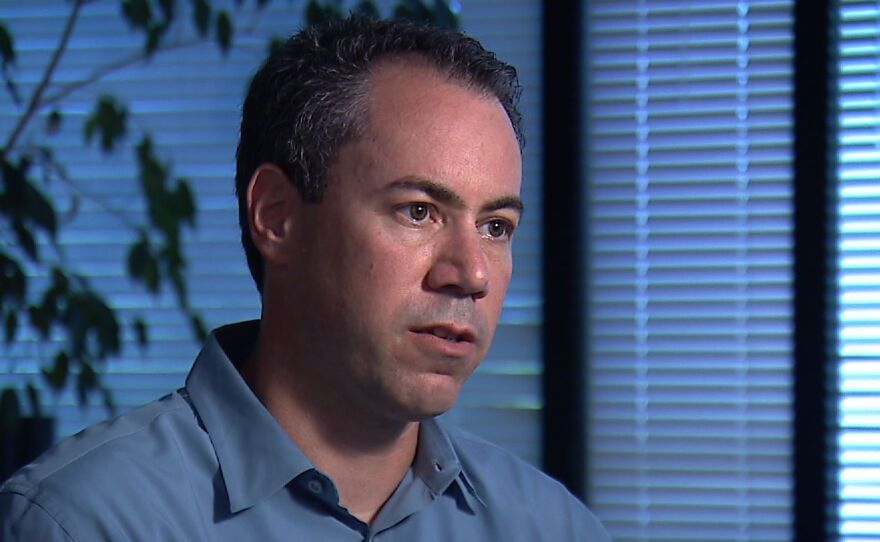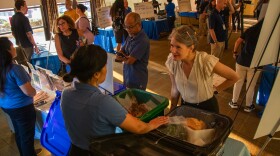By Kyla Calvert
When Anton Monk and three colleagues came up with a solution for fast multimedia networking in homes in 2001, they started to build a business around their invention. Entropic Communications now employs about 320 people, more than 200 of them work in the company’s offices in Sorrento Valley.
A strong connection to the University of California, San Diego played a role in the company’s beginnings and has remained key over a decade.
“The education that UCSD gave me and others in the company was really phenomenal,” said Anton Monk, Entropic co-founder and vice president of technology. “It was really a grounding in the basics of communication theory. And you can see that through other companies that have been founded like Qualcomm and Viasat, some of the better known companies in San Diego.”
The University of California system has seen significant cuts over the last five years. This year it lost $650 million in state funding. If state revenues don’t meet ambitious targets set in Sacramento the system will lose another $100 million in December.
State funding makes up only about 9 percent of UC San Diego’s funding, but much of the campus’ prowess rests on that 9 percent. All of the 850 faculty on the main campus draw their salaries from state money.
“If you were to take away that money or cut that by any significant fraction, then indirectly it does impact our ability to keep those people, and this is happening at a time when other universities are coming and raiding our faculty,” said Suresh Subramani, executive vice chancellor or academic affairs.
People like Monk, who sits on an industry advisory board for the Jacobs School of Engineering, worry these trends will squeeze salaries to the point that UCSD won’t be able to attract the same caliber of faculty. It is those preeminent researchers that have turned the school into a hub for the kind of innovation that spawns and supports companies like Entropic.
“We need to tap into really the graduate student base at UCSD and those graduate students are attracted to the program because of the professors, because of the quality of the program,” Monk said. “So my concern and the concern of the industrial advisory board is that you may not see an issue immediately, but in five years you almost certainly will.”
As state funding has declined, tuition has increased. This fall, it is just over $12,000 a year -- $1,800 more than last year. And as tuition has gone up, so have the student to faculty ratios. Twelve years ago there were about 24 UCSD students to each faculty member, today the number is 32 to 1, according to Subramani. Less direct contact with leading researchers is one thing that could make programs less attractive to the graduate students Monk is interested in attracting.
Supplying skilled workers for the hundreds of biotech and telecommunications companies started in San Diego by UCSD alumni and others is important for those industries’ growth. And while those jobs make up just about 15 percent of San Diego County employment, they are part of a group of industries whose jobs supply the building blocks for most other employment in the county.
“They’re the groups that produces goods and services inside your region that are exported for sale and so bring in new money,” said Marney Cox, chief economist for the San Diego Association of Governments. “They’re sort of the drivers in your economy.”
Several of the other industries considered economic drivers in the region are also underpinned by research and training at UCSD and San Diego State University. UCSD first established links with businesses through defense technology and San Diego State University is an important pipeline for ideas and workers for the local hospitality industry.
Cuts that erode public universities’ competitiveness could feed into the erosion of some of those economic drivers, Cox said.
“That would short circuit this whole economic development activity and job generation process that we’ve spent so long creating, right, over the last 30 years or so,” he said. “We’ve made a very sincere effort and successful one. So, it’s that kind of thing where you might make short-term decisions that have unfortunately disastrous long-term consequences.”
In addition to seeding new and growing industries, UCSD and San Diego State University account for about 7 percent of the region’s economy and jobs, according to Cox. So cuts to the universities’ direct spending also affect the local economy in more immediate ways.
Subramani said UC San Diego is developing more online courses, looking at more efficient and profitable ways to license the technologies that begin in the school’s laboratories and other revenue possibilities. He believes the key to staving off these possible consequences is building a stable financial future for that relies on funding sources other than the state.







